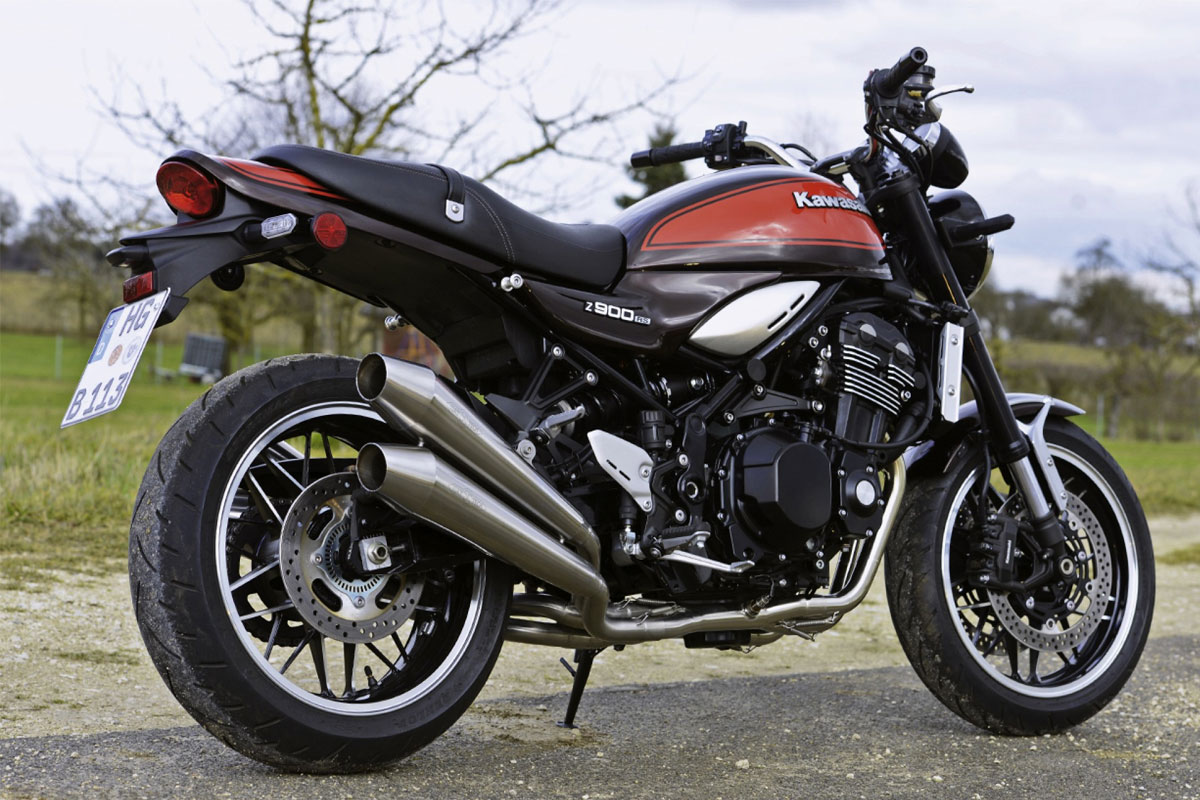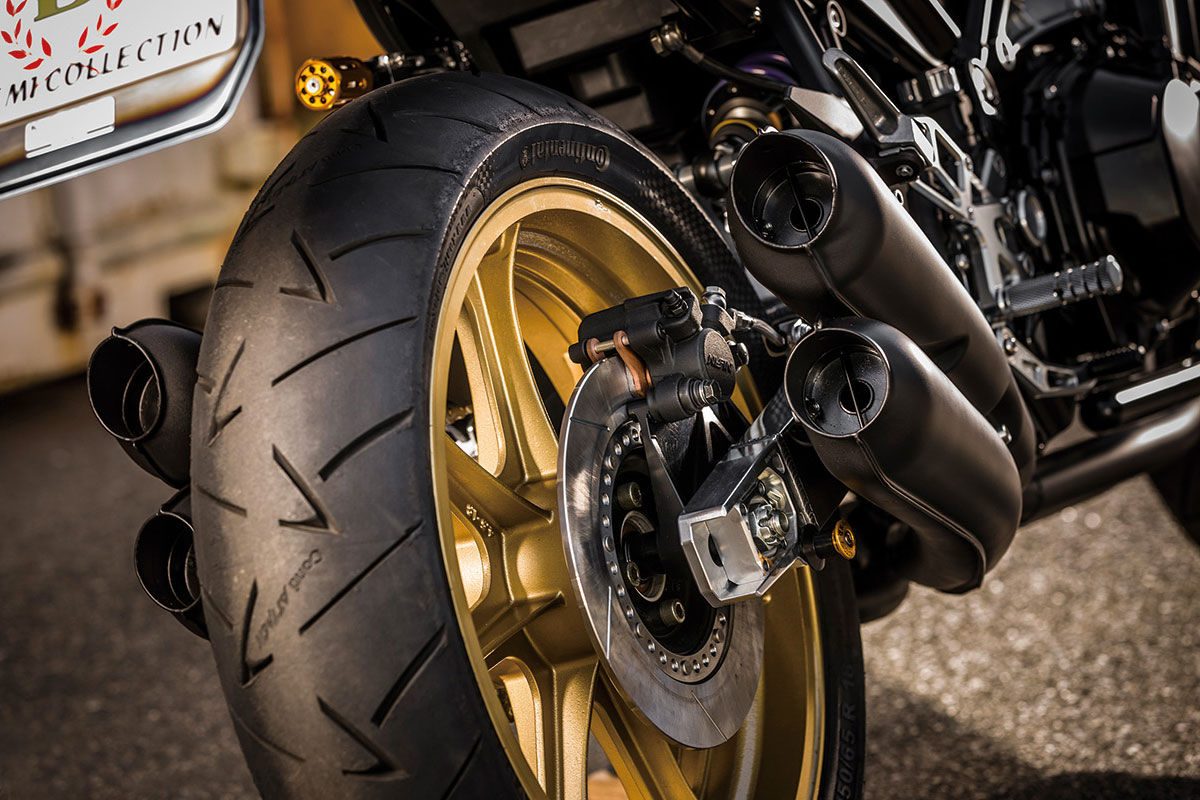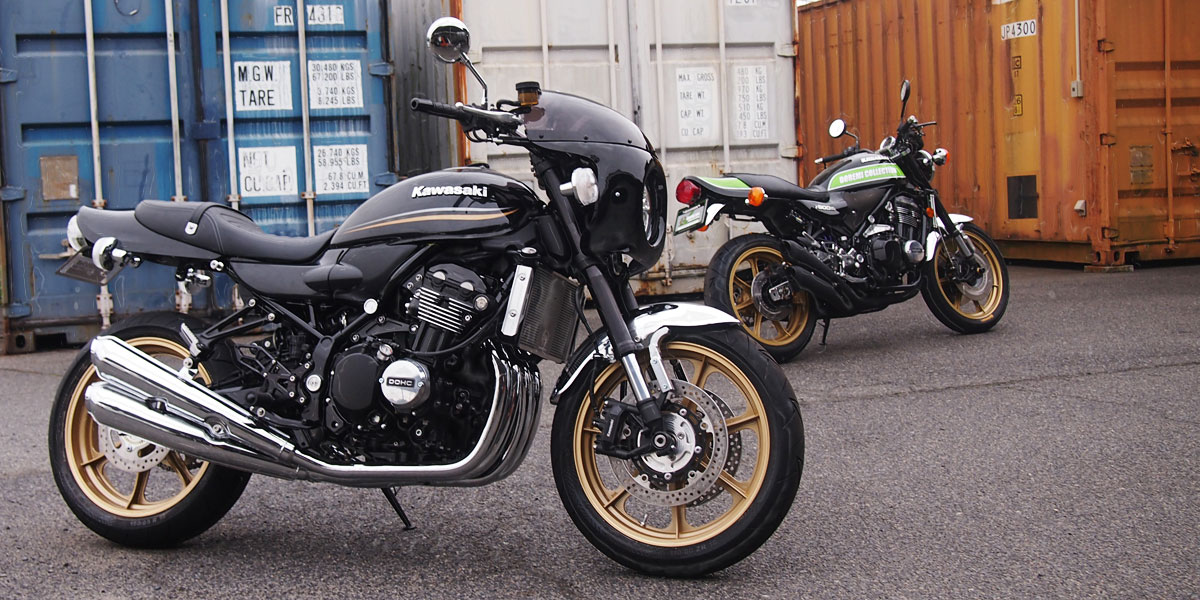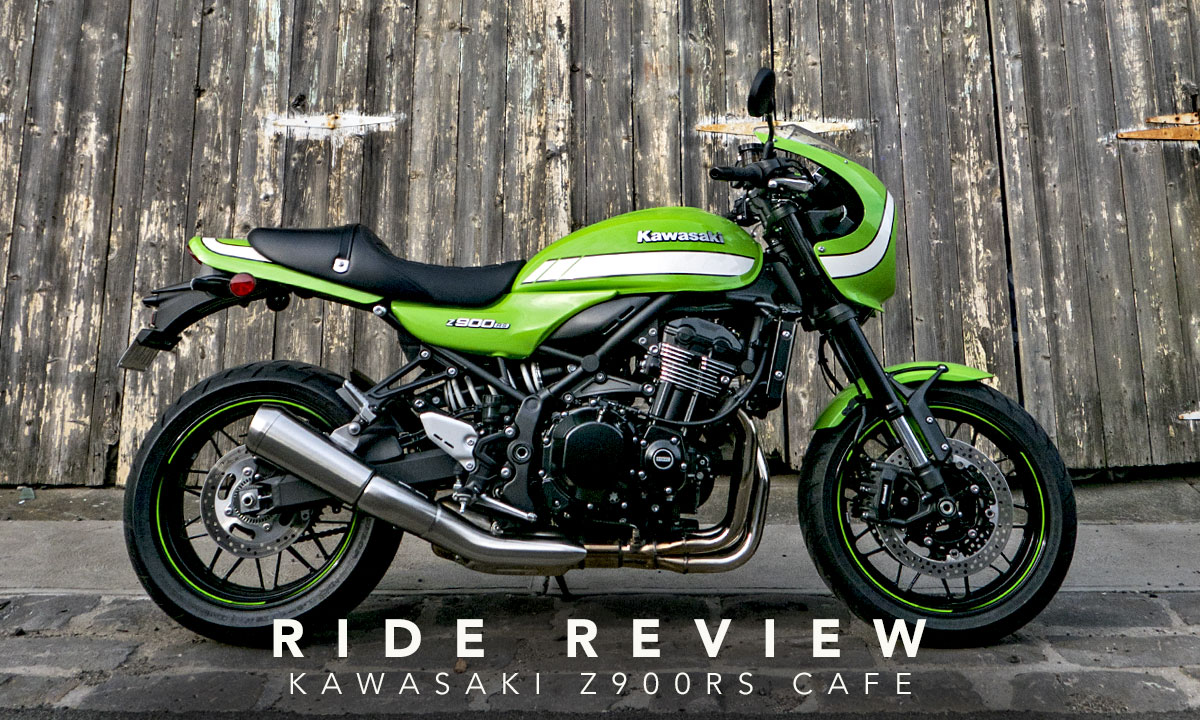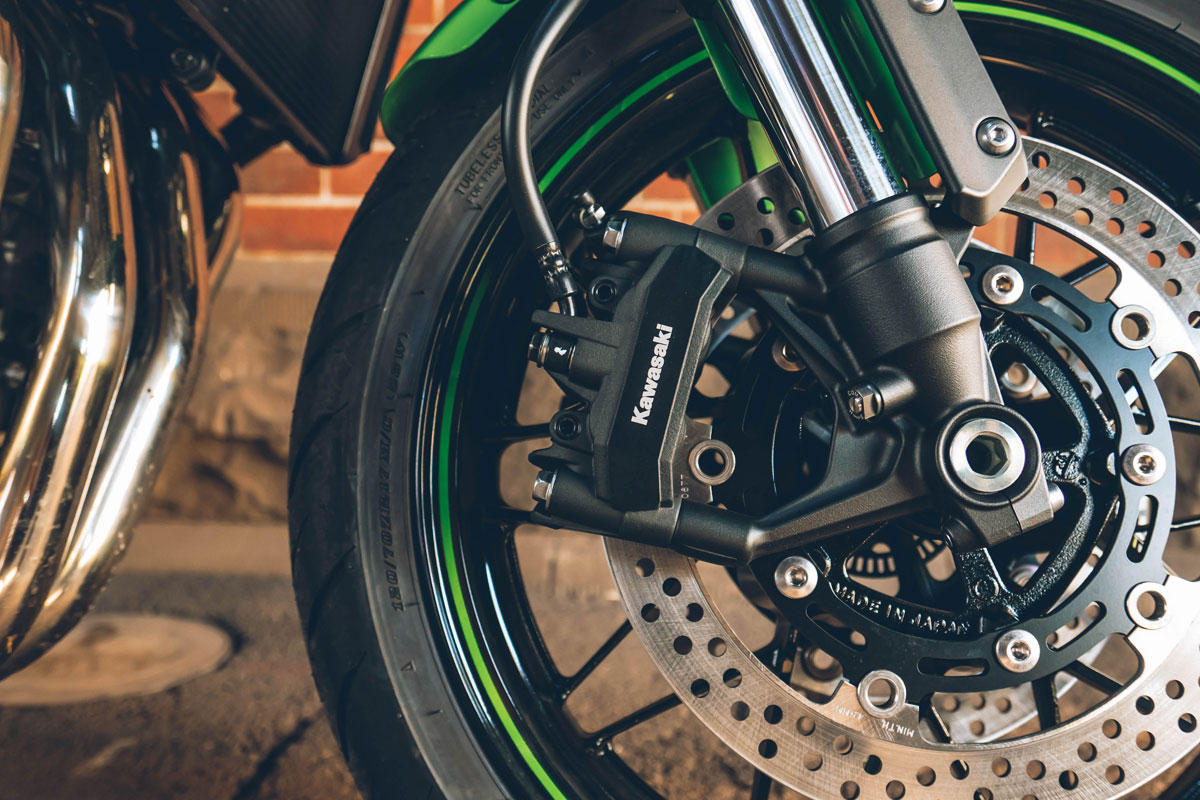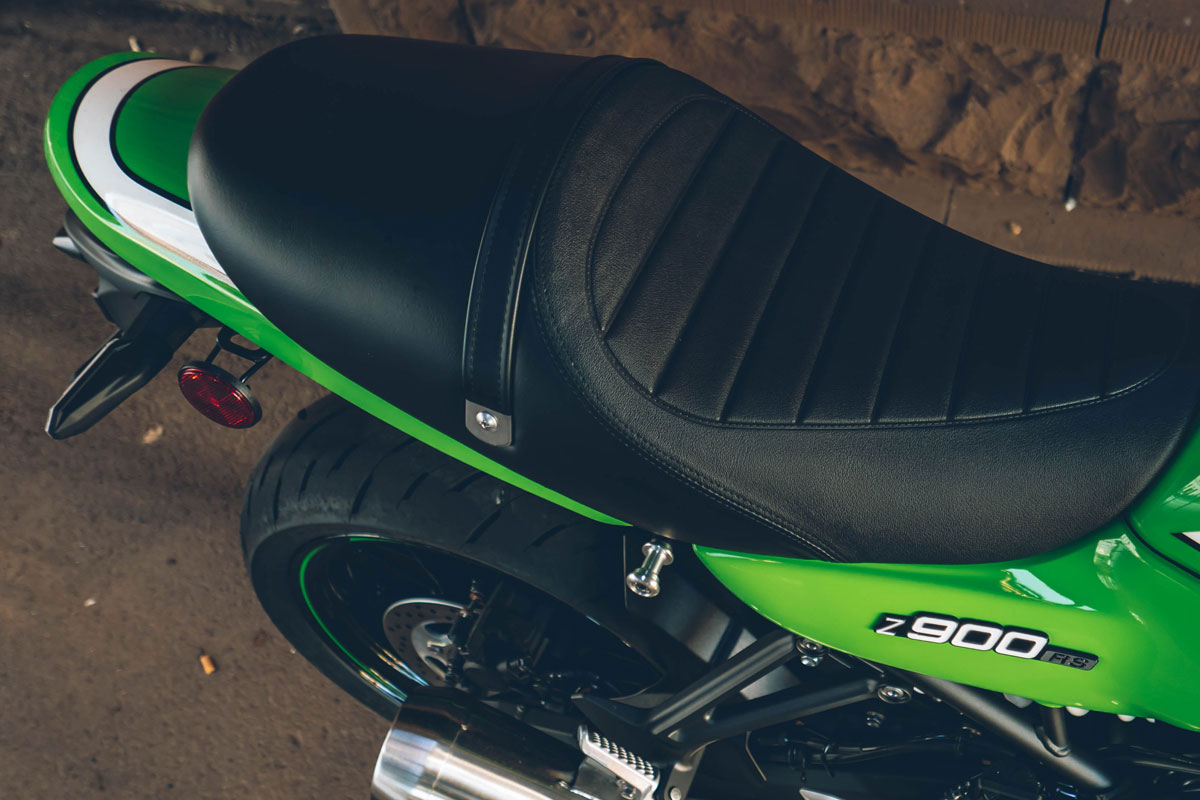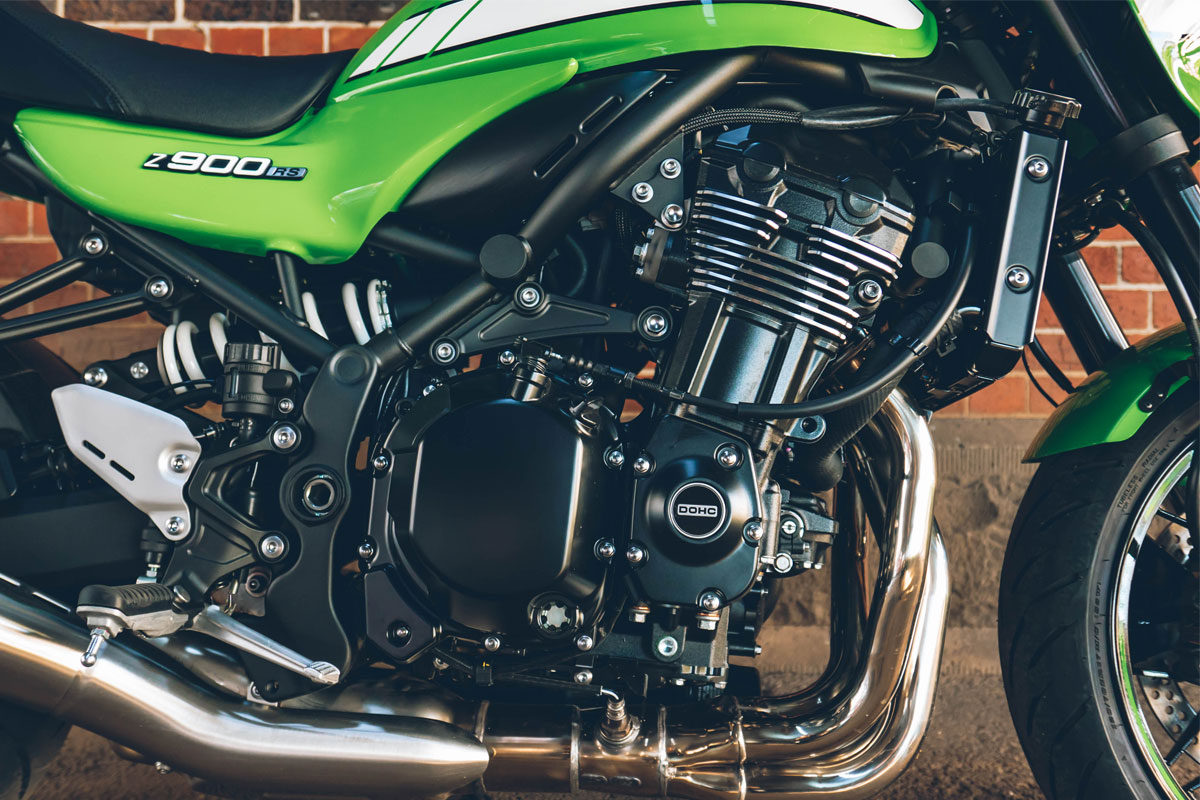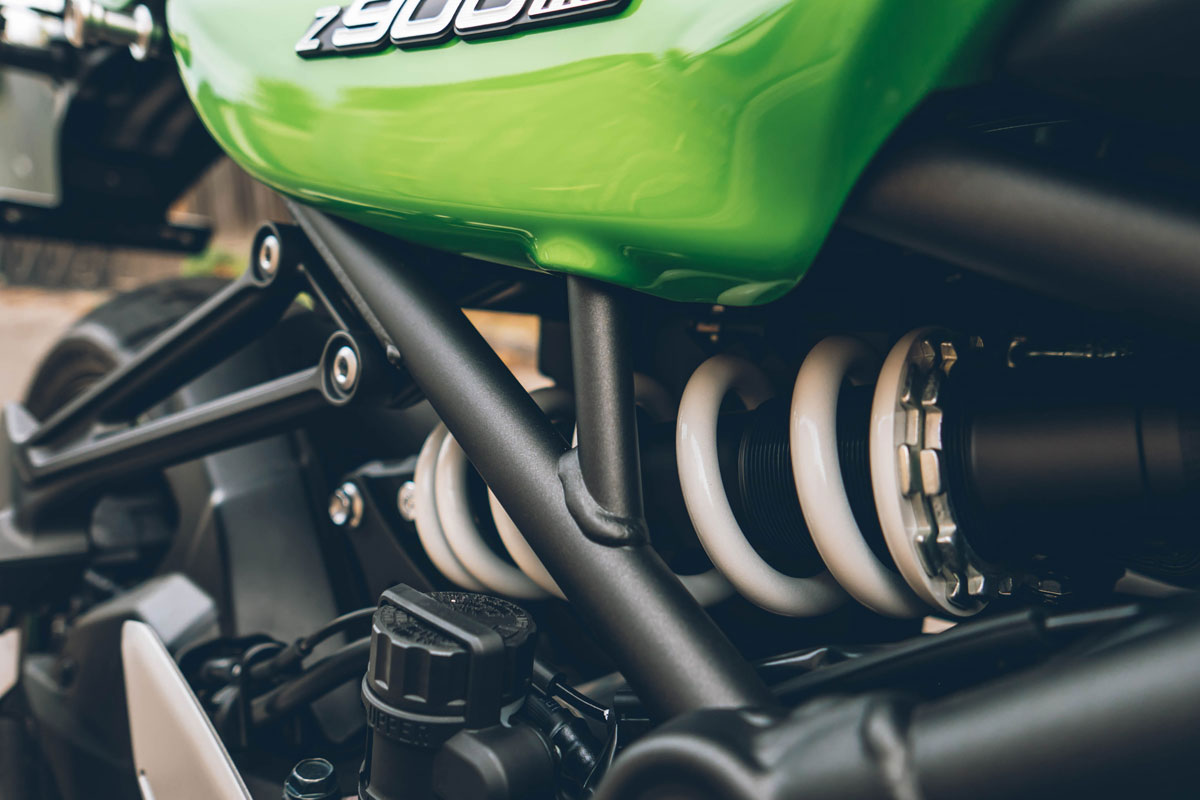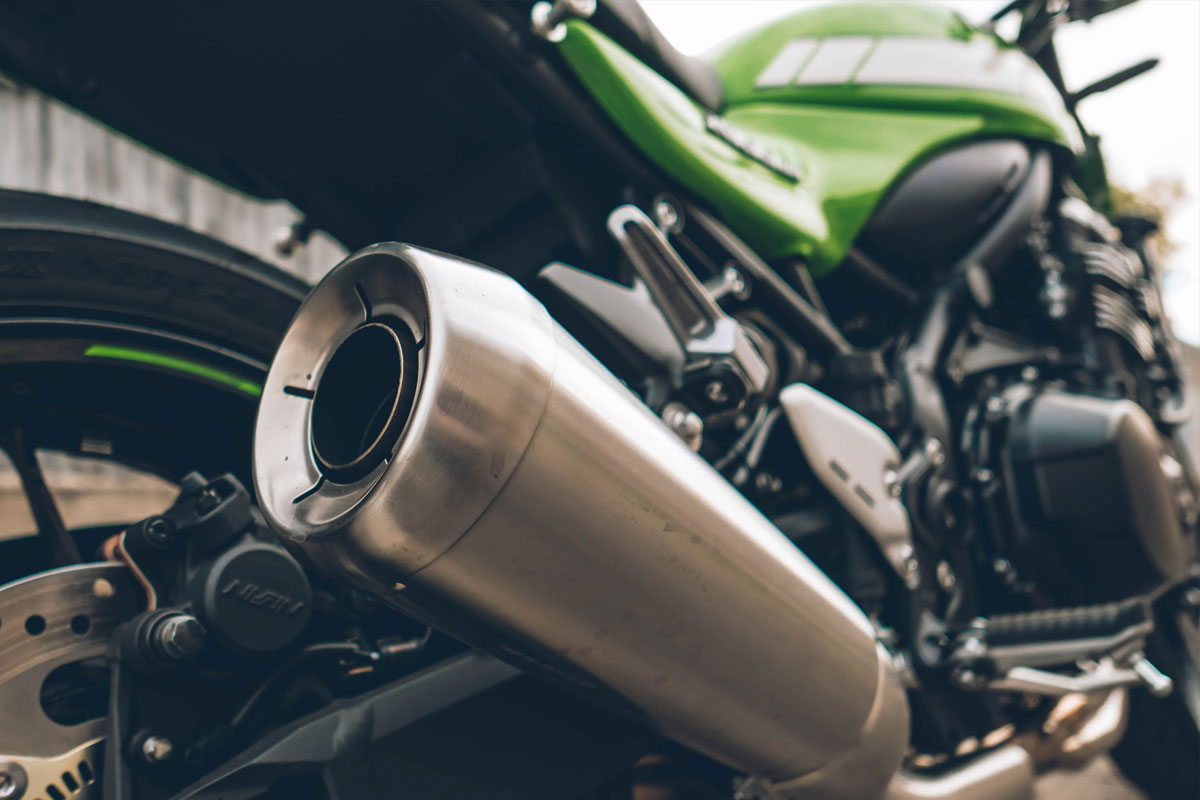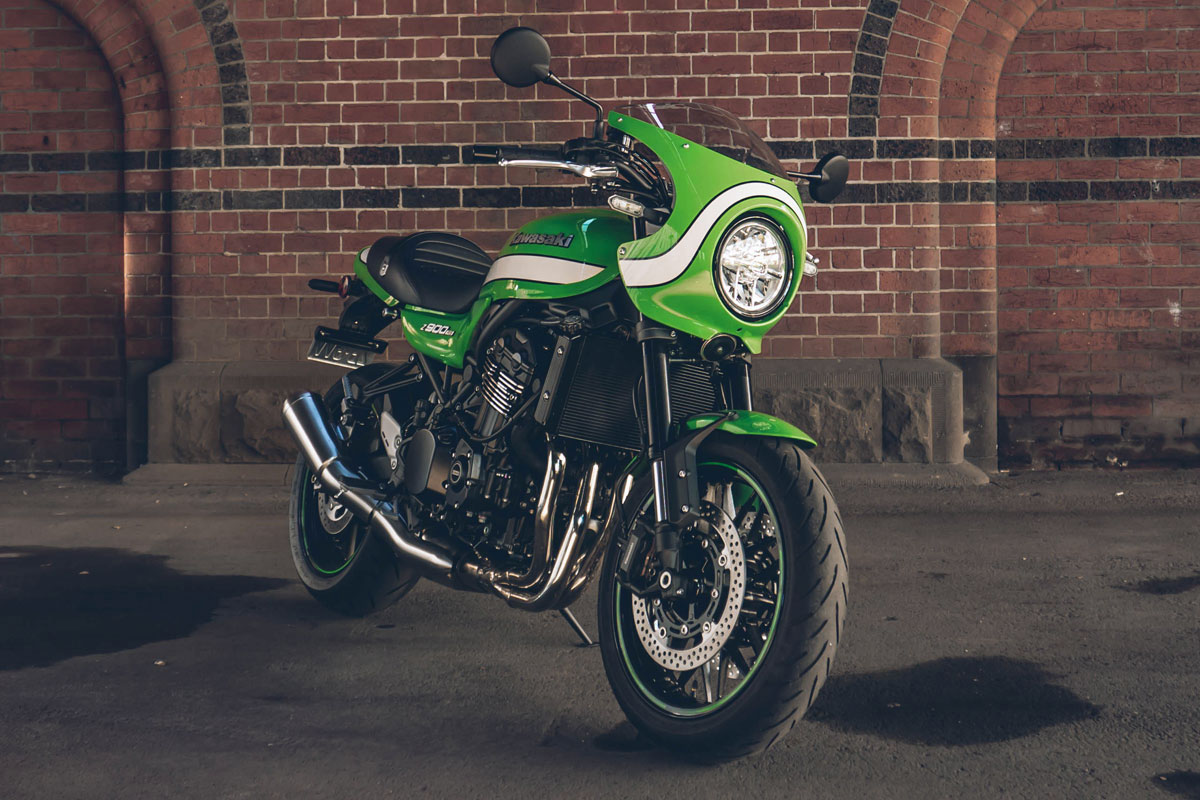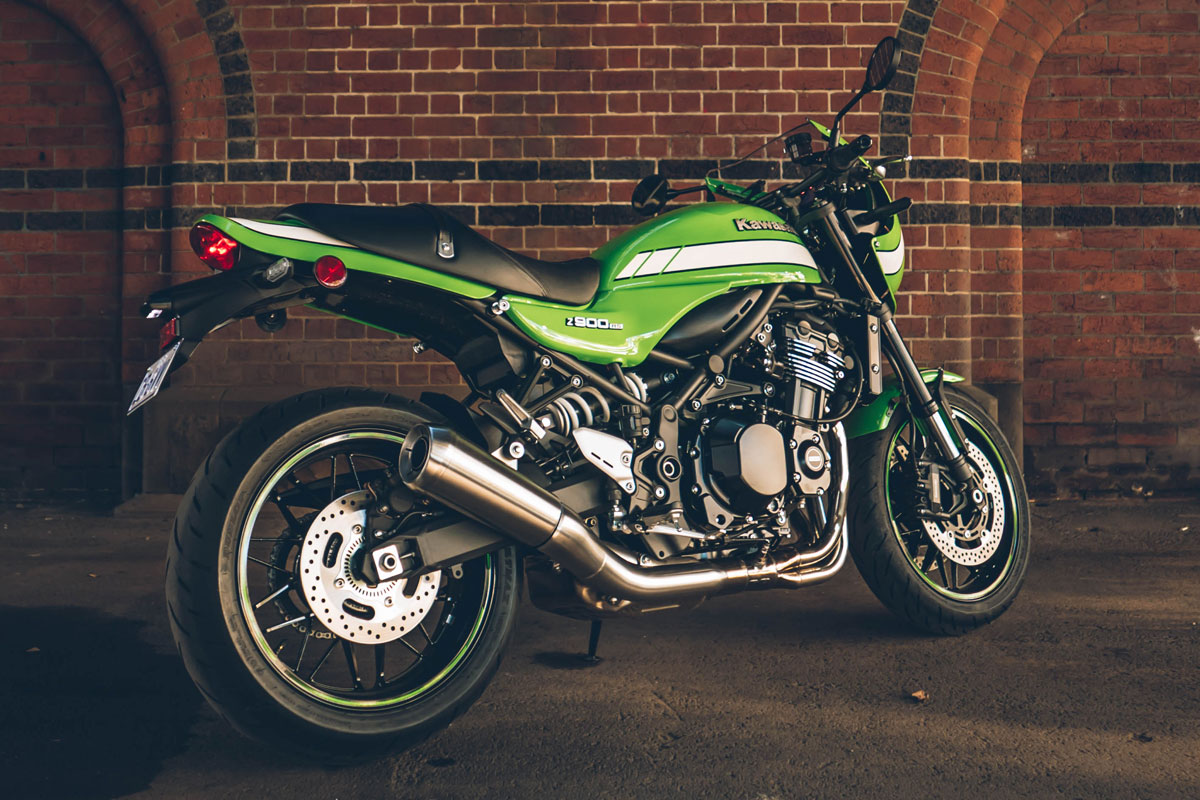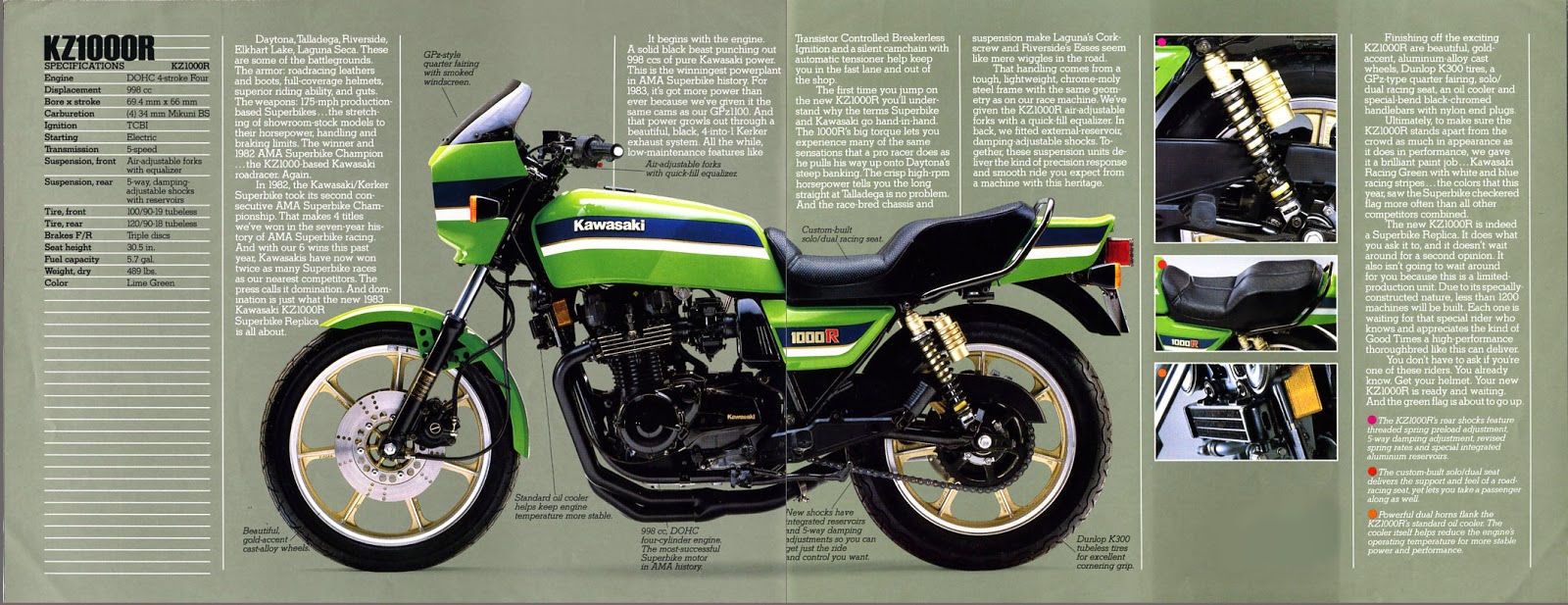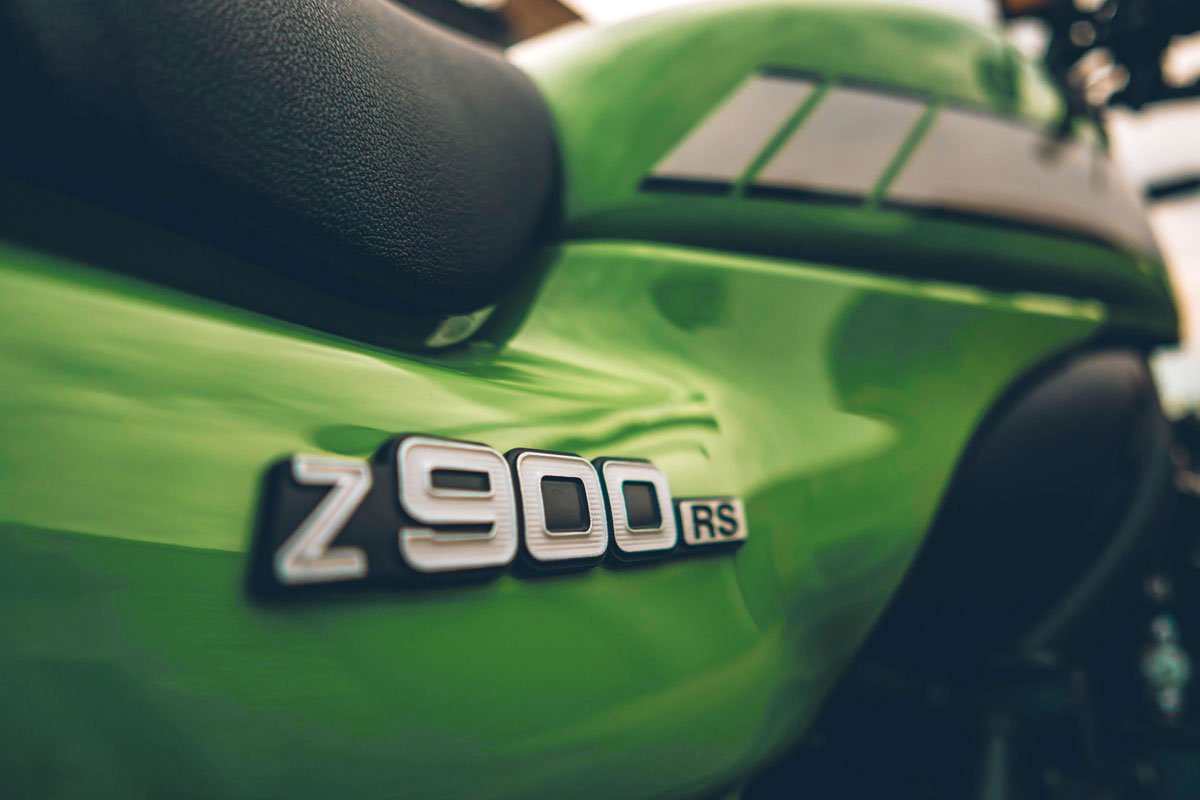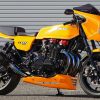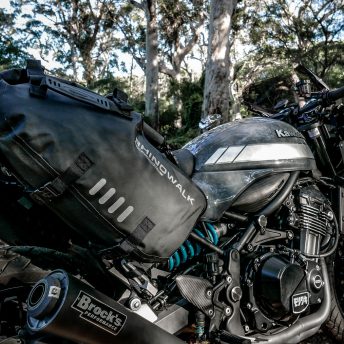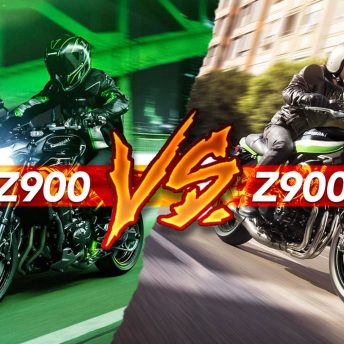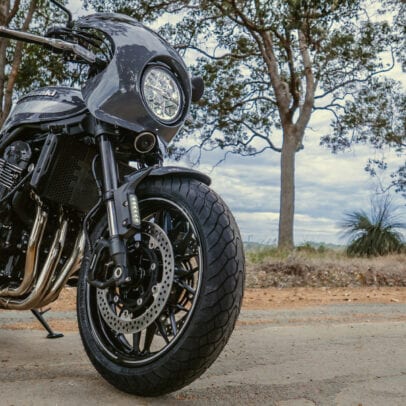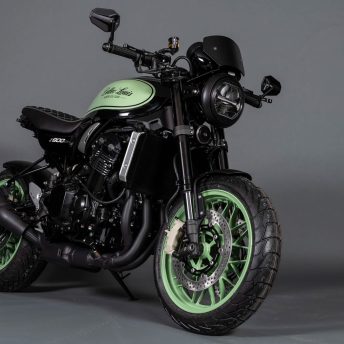I have to confess I tend to get a bit excited when a motorcycle manufacturer announces they are releasing a cafe racer styled machine. I suppose it has something to do with me running this cafe racer focused website for the last 12 years. Unfortunately, excitement often leads to disappointment when the “cafe racers” they release miss the mark. When the Kawasaki Z900RS Cafe was revealed I was suitably excited, but also feared the worst. Was I disappointed? A little confused maybe, but disappointed I certainly was not.
To be or not to be…a cafe racer
Where does the confusion come from? It’s the use of the word ‘Cafe’ in the bikes name that has me stumped, and I’m not the only one. When I’ve posted images of the Z900RS Cafe on my social pages there are usually one or two comments that are along the lines of “How is this a cafe racer?”. One particularly witty keyboard evangelist even wrote “This is the first cafe racer I’ve seen where they‘ve actually added parts” and, sorry Kawasaki, I have to agree. A fairing and lower handlebars does not maketh a cafe racer.
Traditions and naming conventions aside the Z900RS Cafe is a great looking bike. It’s got beautiful lines, an impeccable quality finish and there’s a great balance of modern and retro touches. Sure it suffers from the same bloated fuel tank as the standard model, but there are very few angles where it is really obvious. Then there’s bright green paint scheme which is also a point of contention for some. To be honest, I wasn’t sold on it either, but the more time I spent with the bike the more it appealed to me. This is strange because if you were to peruse my wardrobe you’d find a wide selection of black, grey and not much else. Would I ever wear a t-shirt in this colour? Definitely not, so why the change of heart? I can only put it down to how much I enjoy riding this bike.
Riding the Kawasaki Z900RS Cafe
Despite the Cafe having a slightly sportier aesthetic than the standard RS there’s no performance difference on paper. As explained in our ride review of the Z900RS the bikes are built around a “detuned” version of the Supernaked Z900 inline-four. Don’t let that put you off though, this Kawasaki is no slouch. There’s still 110 horses waiting to be unleashed at the twist of the throttle. What Kawasaki has actually done is retune the engine to improve its rideability. In the city, the suburbs, on the freeway or through twisty country roads this bike always delivers a manageable and, more importantly, enjoyable ride.
Since I was reviewing practically the same bike again I decided to do the same day trip I did on the standard Z900RS. A decent 300km ride that covered both freeway and country road riding. Despite the change in handlebar height, the riding position on the Cafe remains pretty much upright and I actually found the seat to be more comfortable. Since there isn’t a huge difference in seating position the handling is just as predictable as the RS and the mono-shock continues to do a great job of dealing with bumps. The most notable difference I found between the two bikes was the increased comfort at freeway speeds thanks to the front fairing. So if you’re planning on doing a lot of long-haul rides I’d recommend spending the extra money on the Kawasaki Z900RS Cafe.
The real source of inspiration
The Z900RS Cafe is essentially a restyle of the standard model RS. Upfront you get the bikini fairing and lower, flatter handlebars. The new seat features a sportier hump at the rear and the paintwork is unique to this model. There are also quite a few subtle differences that keep your focus on the bike’s bodywork. The frame, for instance, is finished in a satin black paint rather than gloss. The wheels are all black (aside from a thin green pinstripe) and the front fender brackets, radiator surround and side covers all follow suit. They’ve even gone so far as to take the shine off the exhaust by opting for a brushed stainless look rather than chrome plating and it looks great.
As I already stated, this look doesn’t scream cafe racer to me though. What it does scream is KZ1000R. The KZ1000R was a limited production model that Kawasaki built in 1981. It was a street going replica of AMA title winner Eddie Lawson’s track bike. The KZ1000R featured a swooping tailpiece, small front fairing and bright green livery (sound familiar?).
Comparing a KZ1000R to the Z900RS Cafe is like putting a new and an old 911 side by side. Each one has styling reminiscent of the era it was built in, but the similarities are undeniable. Right down to the DOHC letters embossed on the engine covers the Z900RS Cafe was clearly influenced by the KZ. Despite this, someone in Kawasaki’s marketing department obviously decided that the name Z900RS Cafe sounded better than Z900RS Eddy. Perhaps it was a good decision after all.
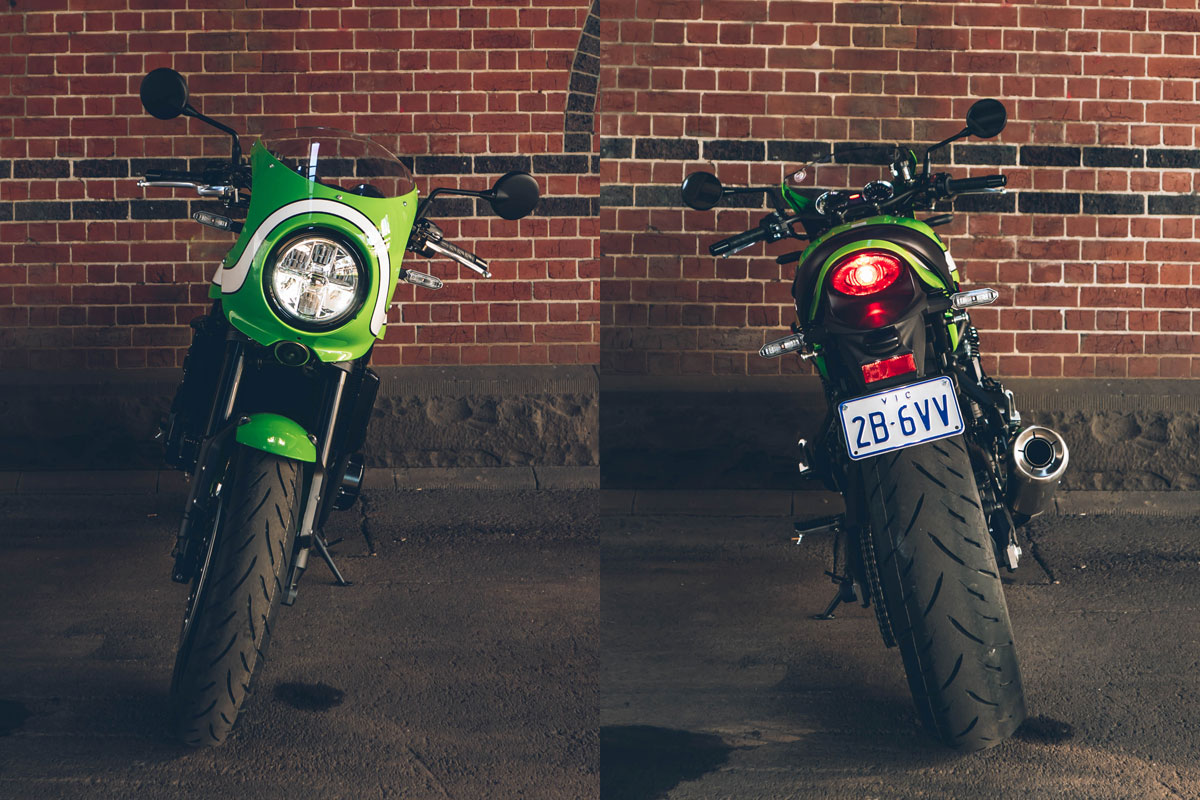

Handing back the keys
All up I had 2 weeks to complete my Kawasaki Z900RS Cafe review. Despite Melbourne’s bitterly cold weather, I rode the bike daily. I’ve never really had any interest in owning an inline-four before, but Kawasaki now has me thinking otherwise. To say I enjoyed my time with the Z-Cafe would be an understatement. Sure you have to pay a premium for this aesthetic upgrade, but the subtle differences make it the obvious choice for me, even if you don’t get any extra performance.
The Kawasaki Z900RS Cafe is available in either bright green or a more subdued grey and silver finish. In Australia, it’s priced at $18,299 AUD while the standard Z900RS will set you back $17,999 AUD.
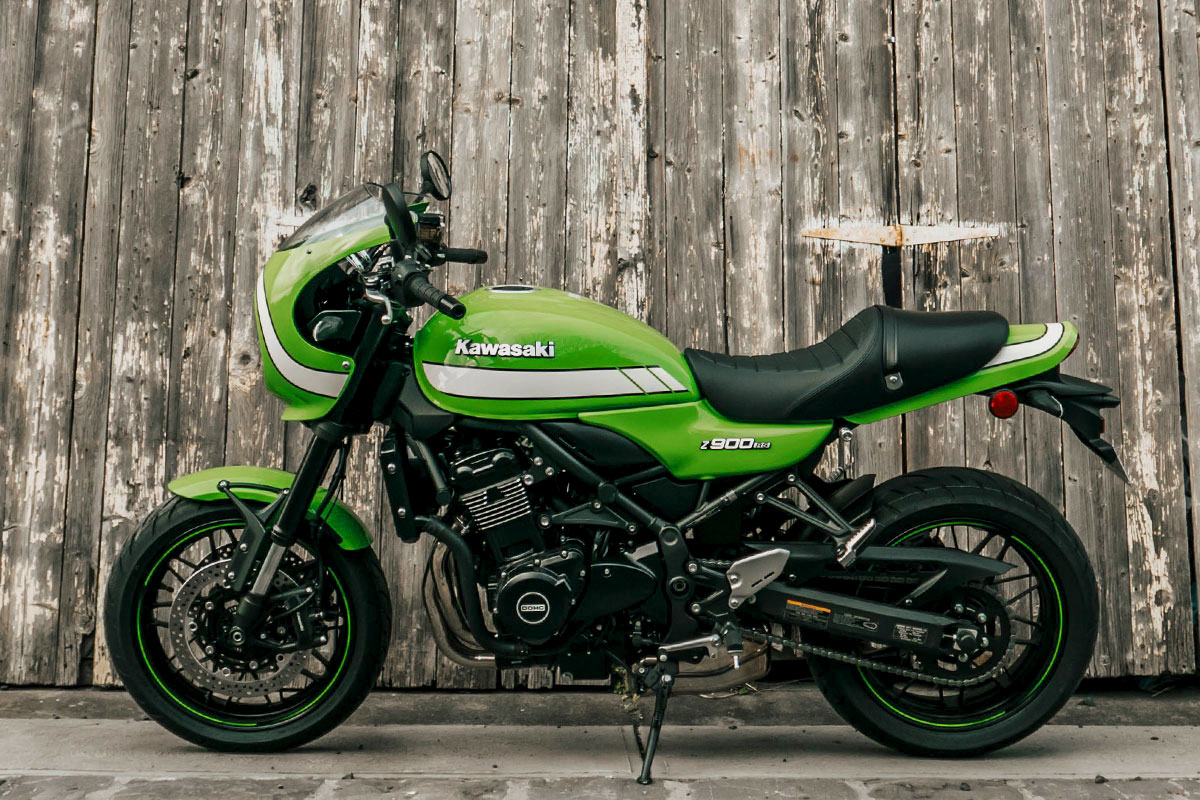

Z900RS aftermarket options
Since the Z900RS has been around for a while now I thought I’d quickly take a look at what the custom parts market is looking like. Obviously, Japanese manufacturers are leading the way since they got the bikes first, and there’s now a great range available online through Webike. Many of the parts are aimed at pushing the Zeds retro styling further with bolt-on replacement parts for things like badges, engine covers, lights and fender eliminator kits.
The most exciting aftermarket developments though are these 2 exhaust systems. One comment that echoed across the Kawasaki forums when the Z900RS was unveiled was that a Z1 homage should have 4 mufflers. Production costs were most likely the reason this didn’t happen. Thankfully, in the aftermarket world, anything can be done if you’re willing to spend the dollars. The first system (pictured below left) takes a more modern styling approach and is by Hattech in German. The Hatttech ‘Four’ can be purchased as a full or half system that is actually a 4-2-4 setup which is street legal in Europe. It’ll set you back around 3,300 Euros for the full system or 2,300 for the half system (cat back). The second exhaust system (below right) is by Japanese workshop Doremi and is an almost exact replica of the original Z1 system. Available in either chrome or black it retails for $2,720 AUD.
